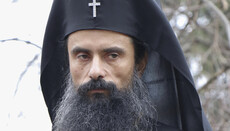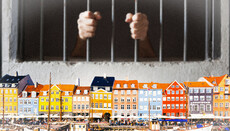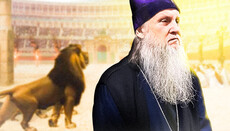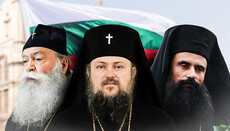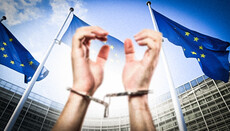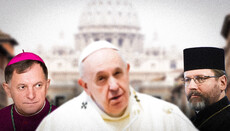6 awkward questions to the OCU creators
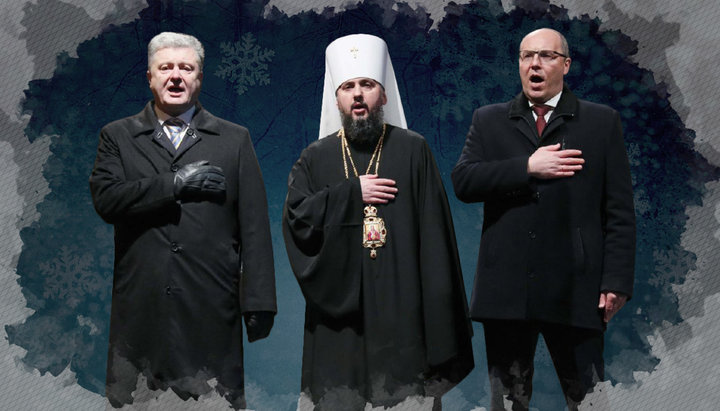
The project of Petro Poroshenko is almost accomplished. A new church is created; the President has fulfilled his election pledges. But what do we have in the end?
On December 15, the "unification council” came to the end in the walls of ancient St. Sophia. There was solemnly proclaimed the creation of a new Church, designed to unite all Ukrainian Orthodoxy and to become one of the Local Autocephalous Churches.
After the “council” Petro Poroshenko said on the Sophia Square, "Glory to Ukraine! ... This is the day of the final conquest of our Ukrainian independence from Russia! And Ukraine will no longer drink, in the words of Taras Shevchenko, 'Moscow poison from the Moscow chalice' ... What kind of church is this? This is a church without Putin.”
The President, civil servants and the media reported triumphantly and pathetically about the beginning of a new era in the history of Ukraine and world Orthodoxy. However, did everything happen the way they put it?
Question 1. Does “Orthodox Church in Ukraine" actually integrate ALL Ukrainian Orthodoxy?
Petro Poroshenko, Andrei Parubiy, the elected head of OCU, Epiphany, and all the others solemnly proclaimed that the Kiev Patriarchate, the UAOC, and the Ukrainian Orthodox Church rolled into one structure.
Petro Poroshenko: "As a result of the decisions of the hierarchs of three Orthodox jurisdictions, a new, united and independent Ukrainian Orthodox Church was born today."
The head of the OCU, Epiphany: "We managed to unite the three branches of Ukrainian Orthodoxy into a single local Orthodox Church."
But is it really so? 42 so called “bishops” from the Kiev Patriarchate and 12 from the UAOC took part in the work of the “unification council”. In fact, the Synod of the Ukrainian Orthodox Church did not bless its bishops and clerics to participate in the meeting.
Metropolitan Anthony, Chancellor of the UOC, said the following about it: “The Holy Synod once again emphasized the impossibility for the clergy, bishops and faithful children of the UOC to participate in the so-called “unification council.”
Nevertheless, 2 bishops did arrive at the “council” – Simeon Shostatsky and Alexander Drabinko.
Once again, 2 bishops of the UOC out of ninety-seven!
The Ukrainian Orthodox Church is twice as large as the Kiev Patriarchate and the UAOC combined. Is it possible to call the new OCU structure as the church of all Ukrainian Orthodoxy, if practically the entire Ukrainian Orthodox Church did not participate in this Council? A rhetorical question, for two percent of the bishops who chose to participate in the council is nothing. That is, the “unification council” is unification indeed but it is the unification solely of the Kiev Patriarchate with the UAOC, no more than that.
Question 2. Can OCU be called a Church?
The Kiev Patriarchate and the UAOC – structures that are not recognized by any of the Local Churches of the world, including Constantinople, participated in the “council” in full force. Here is a letter from 1995, which states that according to Phanar, the Kiev Patriarchate is not one of the canonical Churches.
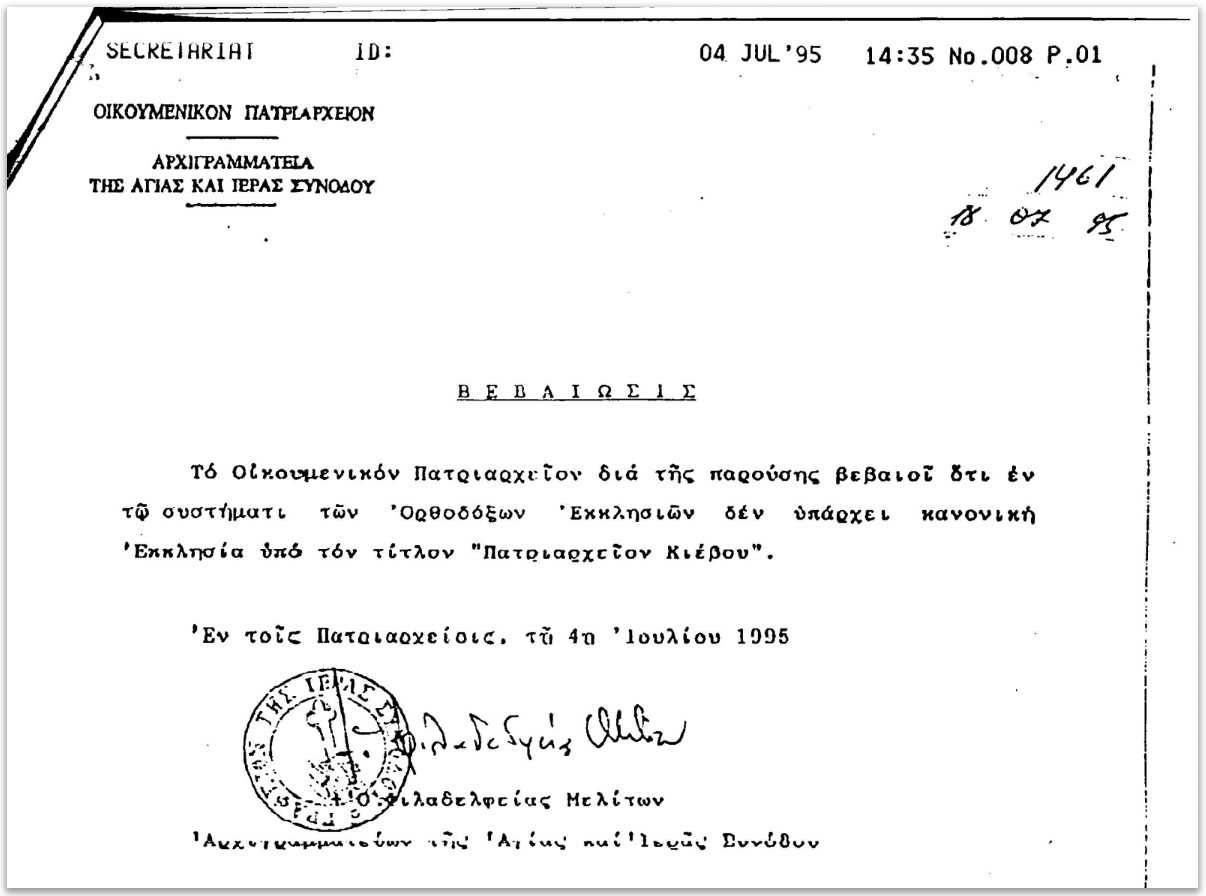
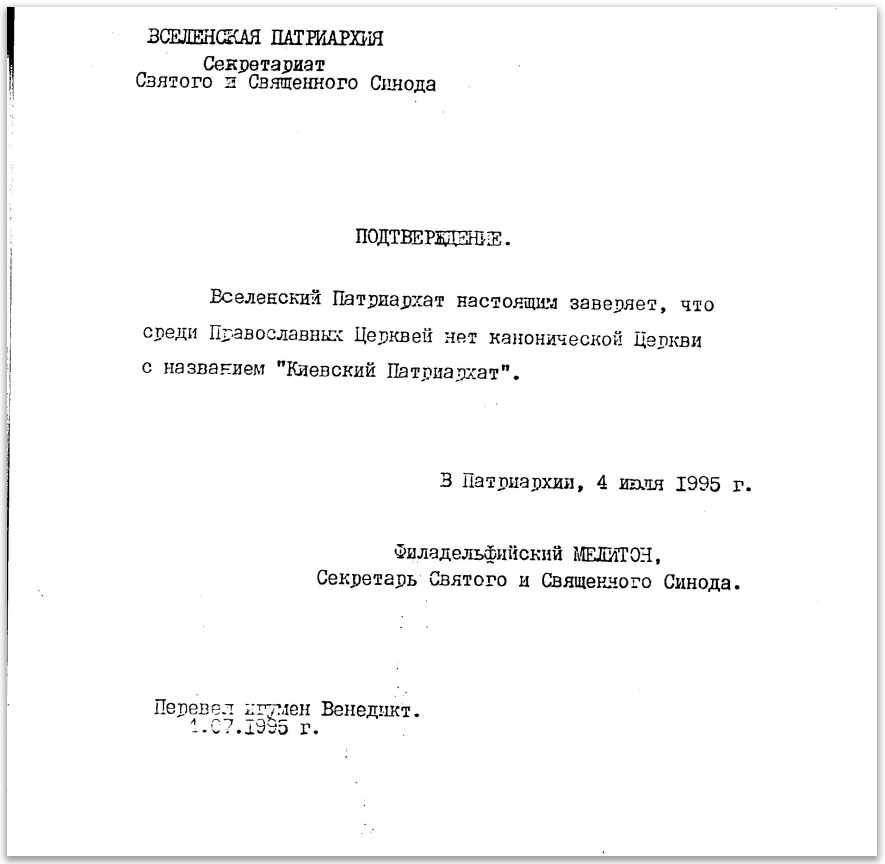
Since 1922, Constantinople has completely supported and approved all punishments and bans imposed on Filaret by the Russian Church, which is proven by the document signed by Patriarch Bartholomew.
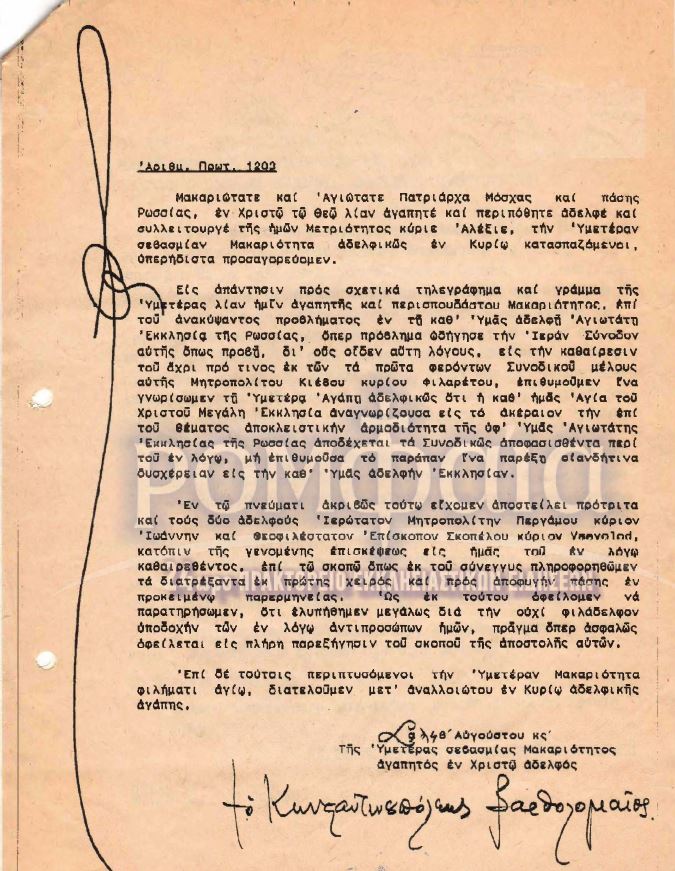
Accordingly, all the episcopal consecrations performed by Filaret during this period could not be recognized by Constantinople either. Since 1992, Patriarch Bartholomew has forbidden his clergy to even approach Filaret, let alone contact him.
However, on October 11, 2018, the Synod of Constantinople, contrary to the canons, without any repentance or ecclesiastical court, reinstated Filaret to his hierarchical rank. But could it retroactively legalize ordinations performed by the person who was not even a member of the Church, let alone a bishop? It couldn’t. That is, almost all the people present at the council, in the eyes of world Orthodoxy, are not bishops, nor Epiphany Dumenko, the elected head of the OCU, is a bishop.
Question 3. Phanar’s job: uniting Orthodoxy or deepening schism?
The representatives of Phanar have said many times they came not to deepen the split but to heal it. Archbishop Daniel Zelinsky, Phanar’s Exarch, stated at the meeting with the President, “We did not come here to divide Ukrainian Orthodoxy, but, on the contrary, to take even more steps to bring everyone the desired unity for the Ukrainian Orthodox Church.”
Patriarch Bartholomew in his message to the “unification council” stated the following, “Our goal and our criterion of the Church of Constantinople is the implementation of what can unite sacred children. Also, the Mother Church has concerns about how to avoid a split and overcome a division in order to create a dialogue and unity.”
Yet, long before the Council, it became clear that such words are outspoken falsehood, since the leadership, the clergy, and the believers of the Ukrainian Orthodox Church many times declared that they would not unite with the schismatics. Did Patriarch Bartholomew and other hierarchs of Phanar know about this? They did know, but still pursued their cause. And they got to the point of absurdity. Contrary to the existence of the UOC, which they themselves yesterday called the only canonical Church in Ukraine, Phanar legalized the schismatics and patched them together to what is Autocephalous Church now. If talk is cheap and not proven by deeds, then this talk is a lie. Speaking of unification, the hierarchs of Phanar in fact have cast in stone the schism of Orthodoxy in Ukraine.
Question 4. Who is actual metropolitan of Kiev now? His Beatitude Onufry or Epiphany?
In his last letter to His Beatitude Onufriy, Patriarch Bartholomew stated that after the Council he would no longer consider him Metropolitan of Kiev: “addressing you as the ‘Eminent Metropoltian of Kiev’, in a form of oikonomia and condescension we notify you that after the election of the Primate of the Ukrainian Church you will not be ecclesiologically and canonically able to bear the title of the Metropolitan of Kiev, which, anyway, you possess today in transgression of the prescribed terms in the official documents of 1686."
However, during the enthronement of His Beatitude Onufriy on August 17, 2014, Patriarch Bartholomew said something completely different. Then he did not express the slightest doubt that His Beatitude Onufriy is the legal Metropolitan of Kiev and the Primate of the Ukrainian Church:
“Bartholomew the Archbishop of Constantinople of New Rome and the Ecumenical Patriarch to His Eminence Onufriy, His Beatitude Metropolitan of Kiev.
With fraternal joy, we learned about your election to the historic and glorious throne of the Kiev Metropolitanate. On the eve of the bright feast of the Transfiguration, we pray to the Lord Jesus Christ that He bestows on Your Beatitude the spiritual power to lead the flock of believers to the contemplation of His Divine grace. From the Ecumenical Patriarchate we send you our fraternal congratulations and pray that the Lord may support from Heaven, look after and attend your vineyard and preserve what His right hand has planted.”
Patriarch Bartholomew also spoke that His Beatitude is the legitimate primate of the canonical Church at the Assembly of Primates of the Local Orthodox Churches in Chambesy in 2016.
What has changed in the past time frame? Maybe, Metropolitan Onufriy has committed some kind of ecclesiastical crime? No, he hasn’t. He has been honorably carrying the obedience of primacy, and no one can question this fact. His Beatitude has the highest authority in the Orthodox world. We can recall only some of the statements of the hierarchs of the Local Churches.
Theodore II, Patriarch of Alexandria: "Our Beatitude Metropolitan Onufriy is a blessed man of God, a real monk."
Metropolitan Timothy of Vostra, Jerusalem Patriarchate: “His Beatitude Onufriy stands out for his spirituality. He is a man of fervent prayer; he is very loved and respected on Mount Athos, in Jerusalem. And I think that everything will be united around him. His Beatitude Onufriy is appreciated and respected by all the Primates of the Local Churches.”
Archimandrite Ephraim, Abbot of the Vatopedi monastery on Holy Mount Athos: “I appeal to all Ukrainian people and ask them to hold onto the canonical Orthodox Church, headed by His Beatitude Metropolitan Onufriy. And the entire Holy Mountain accepts and recognizes only the canonical Ukrainian Church, led by Metropolitan Onufriy.”
Georgy, Archbishop of Wroclaw and Szczecin, Orthodox Church of the Czech Lands and Slovakia: “Vladyka Onufriy, if I can talk about him this way (because my heart is closer than the titles of His Beatitude Metropolitan), I feel him very close as a person. This is a true Orthodox bishop. And acquaintance with him was a terrific impression for me, I am grateful for him to the Lord. His Beatitude is exactly what the head of the Ukrainian Orthodox Church should be like at this difficult time for the Church.”
Thus, we can safely say that it’s not His Beatitude Metropolitan Onufriy who has changed, but Constantinople that has changed. Why? A question to Patriarch Bartholomew.
Question 5. OCU: How much is it a Church and how much – politics?
Many were surprised that President of Ukraine Petro Poroshenko was sitting in the Presidium of the Council at the right hand of Metropolitan Emanuel of Constantinople. While such behavior of the head of state was quite natural for the Roman emperors, it looks strange for Ukraine. Why the President disregards the Constitution, which clearly states that the Church is separated from the state, and directly participates in the creation of a new church structure, is very difficult to say.
During the work of the “unification council” it was said that it would be supported by the prayers of the believers on the Sophia Square. That is, the believers of the very Church, which was getting united, were supposed to pray there.
A few days after the “council”, Petro Poroshenko stated the following, “Just fancy, almost 11 hours, almost 40,000 people were standing in the cold praying for the Church to come into its own!”
Paradoxically, those who had gathered on Sophia Square on December 15 did not have a single icon, a single banner, nothing! Only state flags. Yet there was set up a stage and screens.
The folks listened to the concert, had fun and waited for the end of the “council”. Everything that was going on near the walls of Sophia was the least like a prayer, but it was painfully reminiscent of Euromaidan. Everything was the same as it was then: the stage, the screen and people with flags. Actually, Andrei Parubiy put it baldly.
Andrei Parubiy, spokesman of the Verkhovna Rada: “Five years ago, we stood like today on the Maidan, also in the cold, shoulder to shoulder united. And today we are together like back on the Maidan. And while we are together – we cannot be defeated!”
Even after the “unification council” came to an end, not a single prayer was heard. The elected head of the OCU, Epiphany, thanked Filaret, thanked Poroshenko, thanked Parubiy, thanked the deputies of the Verkhovna Rada, but never remembered about God. Only the anthem.
On the day of the council all the entrances to Kiev and the city center were flooded with buses with non-resident numbers. To the trains that came from regional centers, additional cars were coupled. Social networks teemed with reports that public sector employees complained they were forcibly taken to Kiev.
The correspondent of Hromadske was bewildered when he said that access to the Sofia Square was possible exclusively according to the lists which indicated the affiliation of a given group with a particular public sector entity.
Moreover, those who wanted to get to the Square being off the lists were simply forbidden access.
That is how a beautiful picture was created of enthusiastic supporters of the OCU who allegedly are the very Ukrainian people eager to secure the new Church.
Question 6. Wheresoever is recognition of OCU by the Local Churches?
On August 13, 2014, His Beatitude Onufriy was elected Metropolitan of Kiev and All Ukraine. Literally the next day, he began to receive congratulations from the Local Churches. On August 17, representatives of almost all Autocephalous Churches arrived to attend the enthronement of His Beatitude in the Kiev-Pechersk Lavra, including Metropolitan Emanuel of France – the one who presided over the "unification council." We can see that His Beatitude Onufriy after being elected the canonical head of the Ukrainian Church was almost immediately recognized by the fullness of world Orthodoxy.
One week following the council, none of the Local Churches, except Constantinople, sent their congratulations. And this is very disturbing to the President. When there is no recognition, but one wants to get it, a little information is better than none. The situation is turning into comical – Petro Poroshenko says that the Catholic news portal reported the creation of the OCU and positions it as the beginning of the recognition of this structure.
Petro Poroshenko: “Today, a message has appeared on the Vatican’s website that a church has been created in Ukraine and its primate, His Beatitude Epiphany, has been elected. And believe me – it will only spread."
Outcome
The project of Petro Poroshenko is almost accomplished. A new church is created; the President has fulfilled his election pledges. But what do we have in the end?
The fruit of the titanic efforts of the authorities is a structure built on untruth.
The untruth from the President and his supporters that the unification of the whole of Orthodoxy occurred. The only canonical Church, the UOC, remained faithful to its primate and did not participate in the unification of schismatics at all.
The untruth from Phanar. The words of Constantinople that they ostensibly unite all Orthodoxy never became true.
And what about the Ukrainian Orthodox Church? Our Church remains the Church. The one that is almost 2000 years old. The one that survived not just temporary politicians. She survived the rise and fall of empires, the birth and collapse of powers, ideological confrontations and global cataclysms.
And the Church in Ukraine is led by the real Primate, Abba, given to us in these difficult times by merciful God. Now it is not easy for believers of the Church, but we were not promised it would be easy, on the contrary, we were promised it would be tough. But it does not scare us. The truth is power and politics are not with us. But God is with us. And if God is for us, then who is against us?
